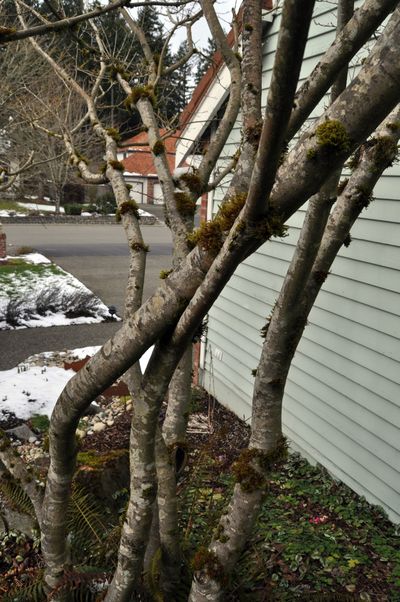Pruning limbs requires some study

The ground is still frozen at least six inches down and probably won’t thaw for a few more weeks. In spite of that little detail, there are jobs you can do now out in the garden even with the ground frozen solid. In fact having the ground frozen makes it easier to walk over the top of plants you wouldn’t walk on otherwise.
A great task now is to shape and prune trees and shrubs. We’ve had some heavy snows this year and the weight of the snow broke a number of branches.
For storm-damaged breaks on tree or shrub start by clearing out the broken limbs first. For a heavy branch, cut it back half way to take the weight off the break point. To finish the trim, locate the ridges of bark found next to the main trunk or branch (called the branch collar) where the damaged branch attaches to the trunk and cut off the limb on the branch side of the ridges. If the branch ripped bark down the trunk, trim off rough edges and torn wood. DO NOT paint the wound with tree paint or tree sealants. Modern research has shown that trees and shrubs quickly isolate damaged places and begin a healing process that will eventually grow wood over the wound.
Beyond storm damage, with leaves off trees it is easy to see branches and make decisions about what else to remove if anything. The first thing to look for are crossing and rubbing branches and branches with weak attachments to the trunk. To decide which of two crossing branches to remove, consider what each branch does to the shape of the tree. Does one provide more shaping in the tree canopy than the other or grow out and away from the trunk. If so keep that branch and take out the other one. Resist just stubbing back branches as this just encourages the tree to send out a wild forest of shoots.
Shrubs also need to have crossing branches removed and cut back to the main branch or the ground. Resist giving shrubs a rounded head shape as this is not natural for any shrub and has a huge impact on future growth patterns for some shrubs. Instead prune back branches independently. It is more work but well worth the effort. Consult a good shrub book for details of pruning a specific shrub.
Shrubs like lilac, forsythia and spirea that bloom in the early spring are best pruned after they bloom. The flower buds form on first or second year wood and pruning them now removes this spring’s blooms.
There is no need to spray non-fruit bearing trees or shrubs unless there was a bug or disease problem with them last year. Consult a certified tree spray professional for the right chemicals and times to spray. Apply a good quality low nitrogen fertilizer to shrubs and trees in early April just before they start budding out.
Next week I’ll talk about caring for fruit bearing shrubs and trees.